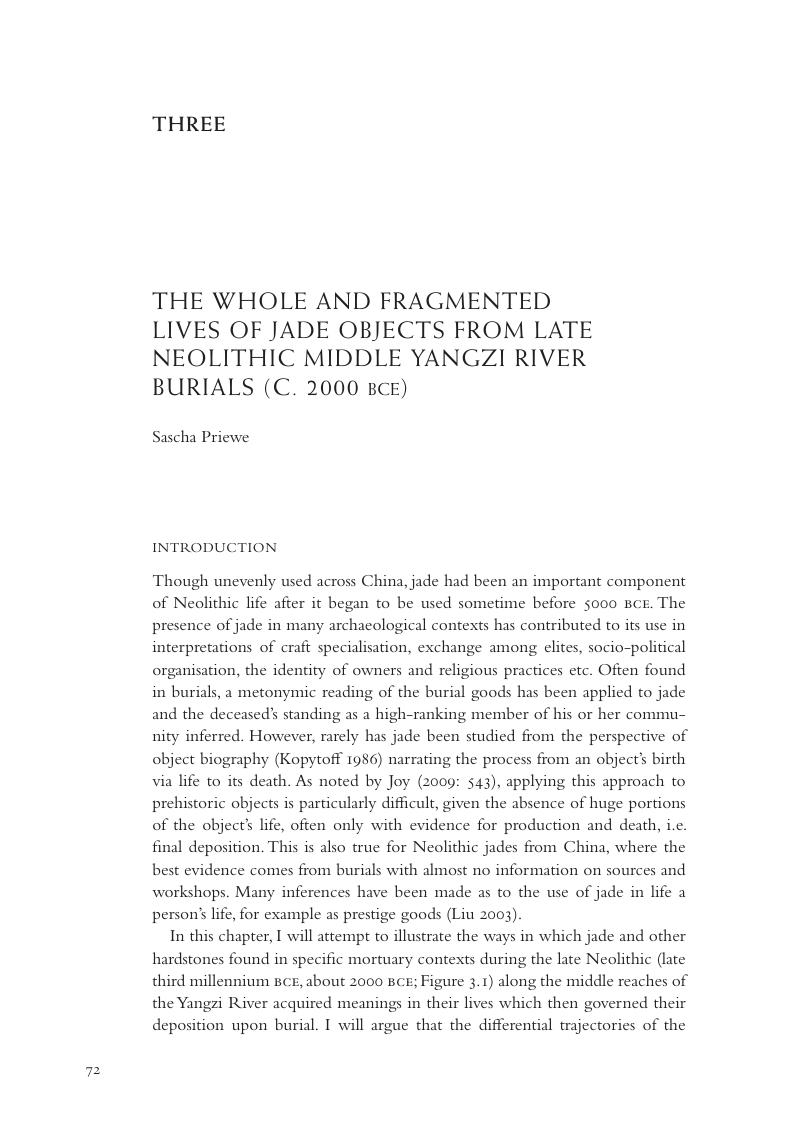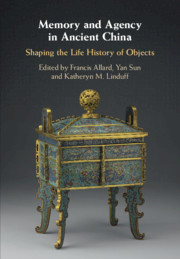Book contents
- Memory and Agency in Ancient China
- Memory and Agency in Ancient China
- Copyright page
- Dedication
- Contents
- Figures
- Contributors
- Foreword: In Memory of Pochan Chen
- Introduction
- One Memory, Amnesia and the Formation of Identity Symbols in China
- Two The Lives of Shovels, Vessels, and Bells in Early South China
- Three The Whole and Fragmented Lives of Jade Objects from Late Neolithic Middle Yangzi River Burials (c. 2000 bce)
- Four The Social Life of Salt in Ancient China from the Late Neolithic to the Han Dynasty
- Five A Divergent Life History of Bronze Willow-Leaf-Shaped Swords of Western Zhou China from the Eleventh to the Tenth Century bce
- Six Bird-Pillar Basins and Cylindrical Vessels
- Seven Toiletries and the Production of Social Memory from the Warring States through the Han (Fourth Century bce to Third Century ce)
- Eight A Biographical Approach to the Study of the Mounted Archer Motif during the Han Dynasty
- Nine Dynamic between Form and Material
- Ten Crossing the Taiwan Strait: Contextualizing and Re-Contextualizing Taiwanese aboriginal Objects (1895–1980)
- Eleven Artifacts that Invoke the Aura and Authority of the Ancient
- Index
- References
Three - The Whole and Fragmented Lives of Jade Objects from Late Neolithic Middle Yangzi River Burials (c. 2000 bce)
Published online by Cambridge University Press: 17 December 2018
- Memory and Agency in Ancient China
- Memory and Agency in Ancient China
- Copyright page
- Dedication
- Contents
- Figures
- Contributors
- Foreword: In Memory of Pochan Chen
- Introduction
- One Memory, Amnesia and the Formation of Identity Symbols in China
- Two The Lives of Shovels, Vessels, and Bells in Early South China
- Three The Whole and Fragmented Lives of Jade Objects from Late Neolithic Middle Yangzi River Burials (c. 2000 bce)
- Four The Social Life of Salt in Ancient China from the Late Neolithic to the Han Dynasty
- Five A Divergent Life History of Bronze Willow-Leaf-Shaped Swords of Western Zhou China from the Eleventh to the Tenth Century bce
- Six Bird-Pillar Basins and Cylindrical Vessels
- Seven Toiletries and the Production of Social Memory from the Warring States through the Han (Fourth Century bce to Third Century ce)
- Eight A Biographical Approach to the Study of the Mounted Archer Motif during the Han Dynasty
- Nine Dynamic between Form and Material
- Ten Crossing the Taiwan Strait: Contextualizing and Re-Contextualizing Taiwanese aboriginal Objects (1895–1980)
- Eleven Artifacts that Invoke the Aura and Authority of the Ancient
- Index
- References
Summary

- Type
- Chapter
- Information
- Memory and Agency in Ancient ChinaShaping the Life History of Objects, pp. 72 - 96Publisher: Cambridge University PressPrint publication year: 2018
References
- 1
- Cited by



